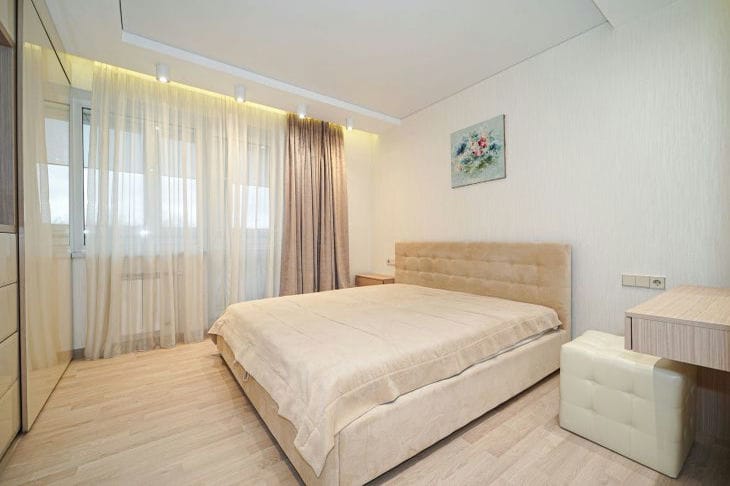How to arrange a bedroom so that it becomes a place where you can have a good rest and recuperate after a hard day?
The whole atmosphere of this room should set you up for relaxation and unwinding.
And here the main thing is the correctly chosen color of the walls, furniture and bedroom accessories. Find out which color scheme is most suitable for the bedroom, says Yulia Tychino .
How to Choose the Right Color for Your Bedroom – Five Useful Tips
A universal choice for the bedroom is light colors that visually enlarge the space, brighten it up and seem to illuminate it. This is an option that is worth using, especially if the room intended for sleeping is small.
Remember that colors are divided into warm and cool. Warm colors make the room cozy, but make it smaller optically. Cool colors, on the contrary, make the interior visually larger. Neutral colors, i.e. gray or "off white" (milky white), can also have a cold or warm shade.

The bedroom should be a room full of harmony and pleasant silence. That is why the best solution is a natural color scheme, based on the colors of earth, water, and greenery.
The color palette for the bedroom should be limited to two or three colors. Active patterns and attractive motifs with a lot of detail are best left for the living room.
It will be good if the chosen colors of the walls and bedroom accessories are adjacent to light wood furniture. The furniture can also be black.
The Best and Worst Bedroom Colors According to Color Psychology
What colors are especially recommended for the bedroom? Before making a decision, take a look at a simple and familiar tool from school - the color wheel. This is a graphic model that allows you to learn the basic principles of color combinations.
Colors on opposite sides of the circle (for example, yellow and purple, green and red) are contrasting colors. Together they look very impressive, but in the bedroom their combination is inappropriate. Such a color tandem does not promote relaxation.
Colors that are next to each other on the color wheel are harmonizing colors. Their juxtaposition is ideal for the bedroom. For example, it can be a combination of light green and dark green, turquoise and blue, etc.
It is very good to choose one or two colors that harmonize with each other and complement them with neutral white or gray.
Slightly more active shades are suitable as accents (pillows or curtains), but they should also be from a range of harmonizing colors.
So, what colors to choose?
Here are some suggestions:
• White color – gives a feeling of freedom, relieves stress, calms and refreshes.
• Earth colors such as beige and tan are colors of nature and are associated with calmness as well as security.
• Muted greens – sage, emerald or bottle green – promote calm.
• Pastel, mint, powdery pink, turquoise shades – improve mood and relax.
• Blue and dark blue – calm the nerves, relieve fatigue, help you fall asleep.
What colors are not recommended for the bedroom
Those that add energy. Yellow brings joy and relieves tension, but in excess it excites and worries.
Orange motivates and increases creativity, but makes it difficult to fall asleep. The same applies to red. The exception is a muted, very muted red in a terracotta shade or a dark burgundy.
Earlier we talked about decorating a studio apartment .









